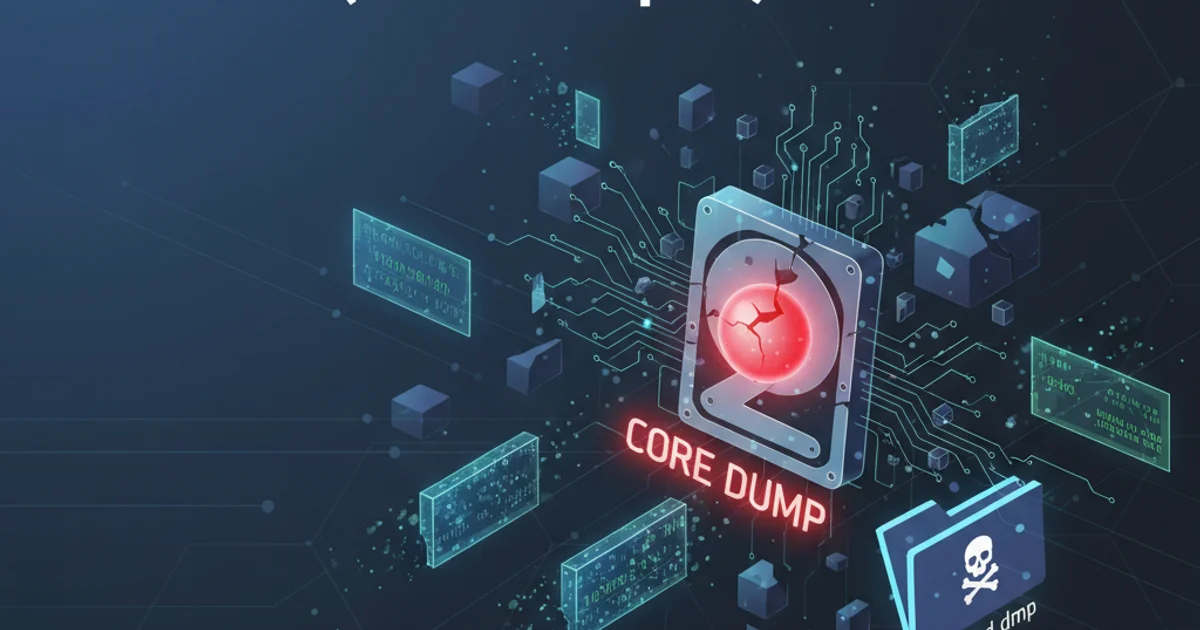Need more information about Aborted (core dumped)
Categories:
Understanding 'Aborted (core dumped)' in C Programs

Explore the common causes, debugging techniques, and prevention strategies for the 'Aborted (core dumped)' error in C and C++ applications, often linked to memory management issues.
The 'Aborted (core dumped)' message is a common and often frustrating runtime error encountered by C and C++ programmers. It indicates that your program terminated abnormally, usually due to a critical error that the operating system couldn't handle gracefully. The 'core dumped' part signifies that the operating system saved a snapshot of the program's memory at the time of the crash to a file (the 'core dump' file), which can be invaluable for debugging.
What Does 'Aborted (core dumped)' Mean?
When a program aborts, it means it has encountered an unrecoverable error. This is distinct from a clean exit or even a segmentation fault (though segmentation faults often lead to aborts). The 'core dumped' aspect is a Unix/Linux feature where the OS writes the entire memory image of the crashing process to a file named core or core.PID (where PID is the process ID). This file contains the program's state, including registers, stack, and heap memory, at the moment of the crash. It's essentially a post-mortem snapshot that allows you to analyze what went wrong using a debugger like GDB.
flowchart TD
A[Program Execution Start] --> B{Critical Error Occurs}
B --> C{OS Detects Unhandled Signal}
C --> D{"Is core dumping enabled?"}
D -- Yes --> E[Write Core Dump File]
E --> F[Program Terminates: "Aborted (core dumped)"]
D -- No --> G[Program Terminates: "Aborted"]
F --> H[Debug with GDB using core file]
G --> I[Debug without core file (harder)]Flowchart illustrating the 'Aborted (core dumped)' process.
Common Causes of 'Aborted (core dumped)'
While the message itself is generic, the underlying causes are typically related to memory corruption or invalid operations. Understanding these common scenarios is the first step towards effective debugging.
malloc, free, array accesses, and pointer arithmetic.1. Double Free or Invalid Free
Attempting to free memory that has already been freed, or freeing memory that was not allocated by malloc (or calloc, realloc), is a classic cause. This corrupts the heap's internal data structures, leading to an abort when the memory allocator detects the inconsistency.
#include <stdlib.h>
#include <stdio.h>
int main() {
int *ptr = (int *)malloc(sizeof(int));
if (ptr == NULL) {
perror("malloc failed");
return 1;
}
*ptr = 10;
printf("Value: %d\n", *ptr);
free(ptr);
// Attempting to free again - leads to 'Aborted (core dumped)'
free(ptr);
return 0;
}
Example of a double-free error.
2. Heap Corruption
Writing past the allocated boundaries of a dynamically allocated buffer (buffer overflow) or writing to freed memory can corrupt the heap's metadata. When the memory allocator performs subsequent operations (like another malloc or free), it finds these inconsistencies and aborts to prevent further damage.
#include <stdlib.h>
#include <string.h>
#include <stdio.h>
int main() {
char *buffer = (char *)malloc(10);
if (buffer == NULL) {
perror("malloc failed");
return 1;
}
// This writes 15 bytes into a 10-byte buffer, corrupting the heap
strcpy(buffer, "This is too long!");
printf("Buffer: %s\n", buffer);
free(buffer);
return 0;
}
Example of a heap buffer overflow.
3. Invalid Pointer Dereference
While a direct dereference of a NULL pointer usually results in a 'Segmentation fault', dereferencing other invalid pointers (e.g., wild pointers, pointers to freed memory) can sometimes lead to heap corruption or other critical errors that trigger an abort.
Debugging with Core Dumps (GDB)
The core dump file is your best friend for debugging these types of errors. Here's how to use it with GDB.
ulimit -c. A value of 0 disables core dumps, while unlimited enables them for all sizes.1. Compile with Debug Symbols
Compile your C/C++ program with the -g flag to include debugging information. This allows GDB to map addresses back to source code lines.
2. Run the Program to Generate Core Dump
Execute your program. When it crashes, a core file (or core.PID) should be generated in the current working directory (or a configured location).
3. Load Core Dump in GDB
Open GDB with your executable and the core dump file: gdb ./your_program core (or gdb ./your_program core.PID).
4. Analyze the Backtrace
Once in GDB, type bt (for backtrace) to see the call stack at the moment of the crash. This will show you the sequence of function calls that led to the error, often pointing directly to the problematic line of code.
5. Inspect Variables and Memory
Use GDB commands like print variable_name, x/Nfmt address (examine memory), or info locals to inspect the state of variables and memory around the crash point. This helps understand why a pointer was invalid or how memory became corrupted.
# Compile with debug symbols
gcc -g -o my_program my_program.c
# Enable core dumps (if not already)
ulimit -c unlimited
# Run the program (it will crash and generate 'core')
./my_program
# Debug with GDB
gdb ./my_program core
# Inside GDB:
(gdb) bt
(gdb) frame 0
(gdb) print ptr
(gdb) x/10x ptr
Typical GDB workflow for analyzing a core dump.